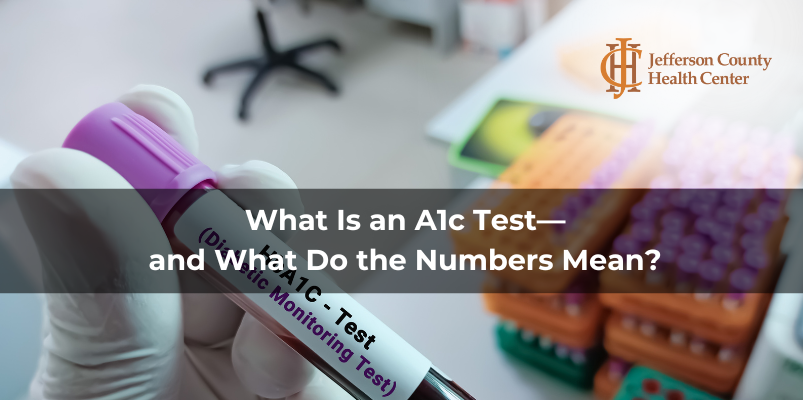What Is an A1c Test—and What Do the Numbers Mean?
November 10, 2025

If you’ve been diagnosed with diabetes or are at risk, you’ve likely heard the term A1c—but understanding what it means can help you take more control of your health.
What is an A1c test?
An A1c is a blood test that shows the average amount of sugar (glucose) that has been circulating in your bloodstream over the past 2 to 3 months. It works by measuring the percentage of sugar that is attached to hemoglobin—the protein in red blood cells that carries oxygen.
The higher your blood sugar levels have been, the higher your A1c percentage will be.
What do the numbers mean?
- Below 5.7% = Normal
- 5.7%–6.4% = Prediabetes
- 6.5% or higher = Diabetes
Once diagnosed with diabetes, most people aim for an A1c around 7% or lower, but your provider may set a different target based on your age, health status, and risk factors.
How often is it checked?
Your provider will likely check your A1c every 3 to 6 months to monitor how well your treatment plan is working.
At Jefferson County Health Center, our Diabetes Education Program—led by Amy Martin, RN, CDCES—helps people understand their A1c results and make changes that support long-term success. The program is certified by the American Diabetes Association and the State of Iowa, and is covered by most insurance plans.
To schedule an appointment, call the JCHC Clinics at
641-472-4156.